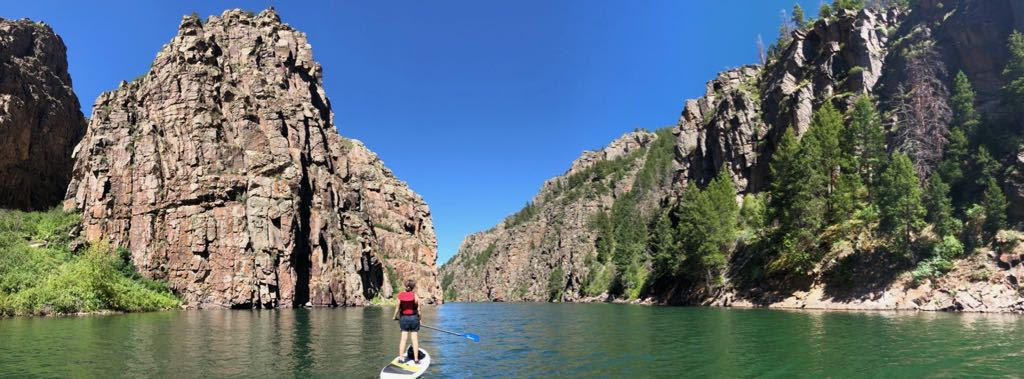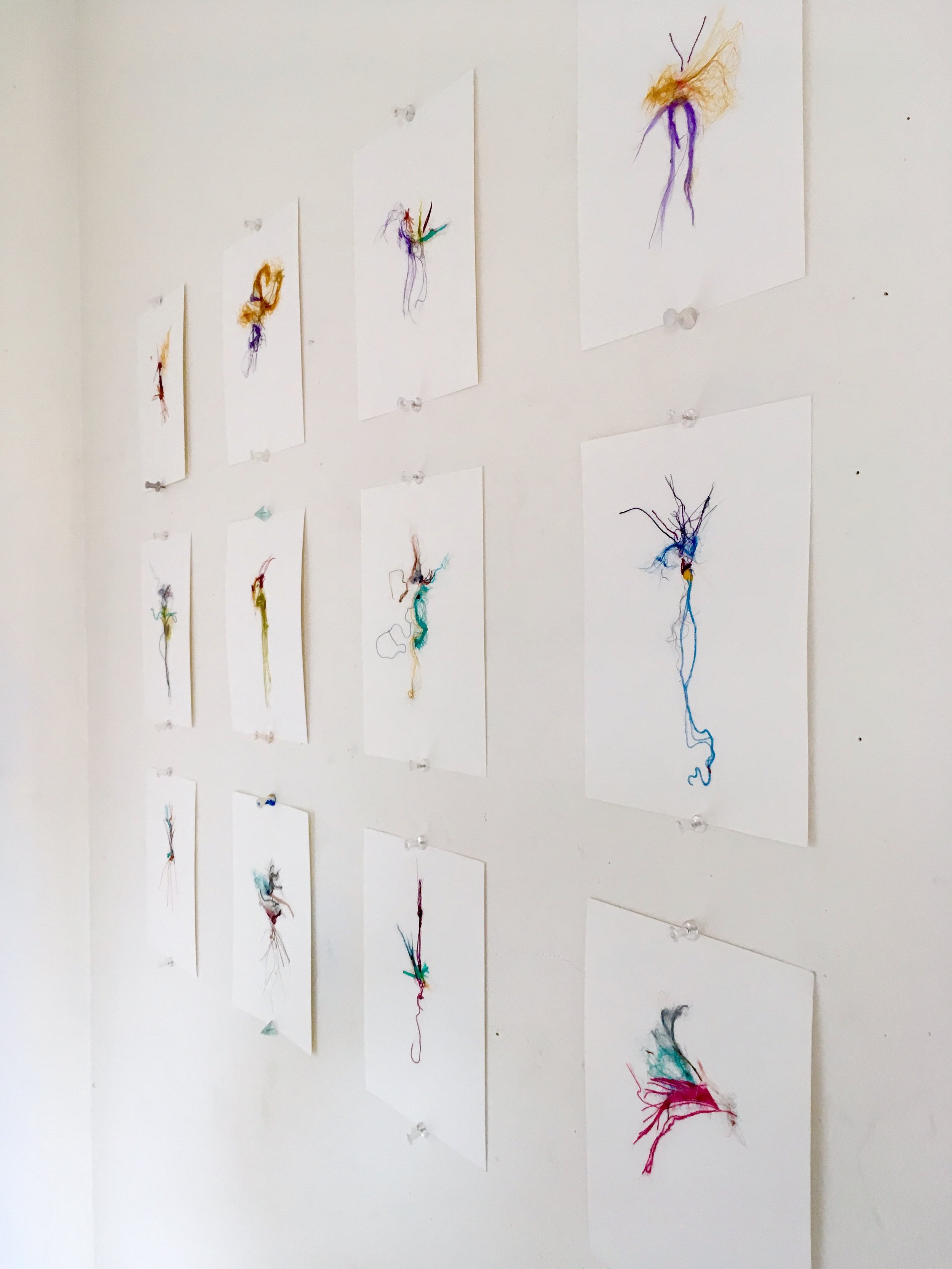The Road to Athabasca: Lessons from the Lichen of Jackman Flats Provincial Park
Below is an excerpted draft from the book I'm working on about the Trans Mountain pipeline expansion, which was my artistic focus at Elsewhere in February 2018. In 2015 I visited one of the 10 provincial parks of British Columbia that has been set to have its borders gerrymandered to accommodate the pipeline as part of the Road to Athabasca pilgrimage. You can follow more of my writings and music at erikalundahl.com or support me on my Patreon at www.patreon.com/erikalundahl
Thank you Elsewhere for helping support my artistic journey! -- Erika
***
Barbara Zimmer is the fairy godmother of Jackman Flatts Provincial Park, one of the ten parks in British Columbia that could have its borders redrawn to accommodate the Trans Mountain pipeline expansion. Trained as a botanist, Barbara and her husband moved to Valemount, British Columbia in 1975. She soon became enamored with the biodiversity of old growth lodge pole pine trees and lichen species in the local wooded area where locals would cross-country ski during the winter. She’s spent over half her life now protecting them.
Forty-years later, and Barbara’s advocacy for the park has helped transform it from a neglected and unused strip of land owned by the Ministry of Forestry (the land was too unstable to be forested), to one of British Columbia’s Class A Provincial Parks.
We meet Barbara at the trailhead of Jackman Flats after a relatively short day of riding from Blueriver to Valemount. This is a “Cinderella Park” she explains—underfunded and little utilized by the public except by the locals. But left alone, she says, is just the way it should be. She gives us the cliff notes on the park’s geologic history in one swift, powerful monologue:
“Go back 11,000 years ago and the place was full with ice, wall-to-wall ice in this whole valley. And if you ever get a chance to look down the valley you can see. It’s that glacial, U-shaped trench, and there was huge glacial movement down the trench. And when all that melted away about 11,000 years ago it left a huge lake down there. And as the lake dried up, the prevailing wind from the southwest here picked up the sediments from the dry lakebed and they blew them. So you had an order of events. The heavy particles dropped down here. The small particles dropped out further North. And you way North, they got clay, real small stuff. We’re in the middle, we sort of have nice soil, its kind of silty. And here they got the sand, and Valemount got the sand."
Over thousands of years, the sand of what is now called Kinbasket Lake deposited into over a hundred dunes throughout the Jackman Flats Provincial Park. Now, the dunes are somewhat stabilized, though still over half of them regularly shift with the wind and weather.
“Any major disturbances such as a pipeline could easily cause the dunes to erode and drift across homes and highways.” That’s what Barbara told the National Energy Board in her expert statement on why the Trans Mountain Pipeline expansion should not be built through the middle of this park. The existing Trans Mountain pipeline, which we’d followed along with that day, was just across Highway 5, outside of the boundaries of the park.
***
Barbara is a civil servant to this small patch of wild, someone who has been called to act as protector, historian and translator for the voice of this unique 1130-acre bioregion. She speaks for the park’s interests as a passionate lawyer for her client in court. We follow her through the park single-file, along a winding footpath, through groves of dry but hardy lodge pole pine trees, and a crusty ground littered with small, berry-covered shrubs and yellow flora. They don’t look it, but many of these trees are 250-years old or more, she tells us. “Their growth rings are so tight because they’re growing in such bad conditions.”
Clinging to sand dunes with very few accessible nutrients has made these pines resilient, able to sustain an environment defined by instability and scarcity. When the pine beetle came through, an invasive species to the region that kills lodge pole pines and other trees, Jackman Flats were impacted, but on average, they weathered the invasion much better than other areas of British Columbia.
When a pine tree is under attack by beetles, it releases pitch to try and drown out the beetles. She takes us to one pock-marked pine, with a long stripe of burn running vertically up the trunk, revealing a dark inner core. This tree survived two large forest fires, but lost the fight to the pine beetle, invasive to this region.
Barbara suspects that the age of the trees, and the incredibly slow rate of growth is what has protected them from the beetles invasion that has now passed through southern British Columbia and is spreading north to the Boreal Forest as the temperatures have warmed with climate change. For now, the remaining trees are believed to be relatively safe from the beetles.
“These trees fought hard. They did well.” Barbara tells us proudly.
When the Parks Canada wanted to come log the threes trees felled by the pine beetle invasion, she wrote to them and told them not to.
“I told them you just leave the pine beetle alone. Pine beetles have been with pine trees for hundreds of millions of years. This has all happened before. There’s only one thing different now, and out of balance, and that’s us. We’re the only thing that’s messed up really.”
***
Even though Jackman Flats Provincial Park is only 1130 acres, it’s the only wild left on the Robson valley bottom that’s still in one piece. The rest of it is in private hands, and is mostly developed into farmland. It’s just not enough space, she says. There used to be Nightjar birds here, but Barbara hasn’t seen them in a long time. Still, there are over 200 species have been counted to date by herself, other volunteers, and outside experts that travel to see the unique ecosystem held within the park.
“Even though this is a tiny little park, it’s all that’s left ecologically intact for all the things that need to live here.”
Lower in the park, the ground is covered with Kinnikinnick or Pudding Berry. A red berry with a mealy texture favored by grouse and bears, its name is taken from the native word for “smoking mixture,” which it is often used for.
On another pine tree, Barbara gently fingers wispy threads of grey and green old man’s beard and horse hair lichen to show us an organism that is both plant and animal: Lichen. This is the marriage of fungi and algae, she tells us. To teach us how that works, she grabs a hold of my arm, playfully.
“Okay. You be the algae.” she says to me with a sly smile. “You’re green and you have chlorophyll and you can make food.” She points to herself. “I’ll be the fungus. Hi.”
“Umm, hi.” I don’t know what else to say, but I like this game already.
“Okay, Now I punch right through your shirt. Not under your skin though, I don’t want to hurt you.” She mimes punching into the side of my shirt gently. “Okay, make food.” She orders, urgently. “Food, food. Make it.” I start miming mixing some sort of food in a bowl.
“Good. You’re photosynthesizing, you’re making sugars. And I take 40% of them. I just take them and I use them and I grow. Keep working. Making the food.” Now she softens, and puts her arm around me. “So, I sort of surround you.” If you cut lichen under a microscope, you can see the little green algae cells, she tells us. “The fungus has them all lined up like little rows of cabbages, right up near the tops so they can get the sun.”
Botanists used to call this collaboration “mutualism.”
“Now we call it controlled parasitism.” She tells me. “Because if I take too much from you, what’s going to happen?”
“I’ll wither away?”
“Exactly right.”
***
When we reach a high point on one of the dunes and the path widens. It really is just sand beneath our feet. Here, the trees thin. The ground looks crusted and dry, but with muted pastel colors winking out from the sand.
“Is that Cryptogamic soil?” Derek asks, excited.
“Exactly right.” Barbara leans down, pointing. “Cryptogamic means hidden life.”
Down on my hands and knees, I can see more clearly. Embedded in the rolling sand, crystalline structures of muted greens, blacks and grays, reds and purples coat the ground, like a homemade knit cap made of the thinnest knitting needles in the world. Here mosses, fungi and algae overlap, connect together, creating a co-dependent network of life. The grey patches, she tells us, are a lichen unfound in anywhere else in British Columbia.
In 1995, “Coral Lichen” was discovered in Jackman Flats Provincial Park. Stereocaulon condensatum—the grey patches of lichen Barbara showed us—were discovered by Trevor Goward [E1] on the tops of one of the smaller dunes. Curator of lichens at the University of British Columbia, he has since made many other species discovery in the parks and said of the area:
“With forty years of lichen study behind me, I can say without fear of contradiction that Jackman Flats is one of the top ten lichen hot spots in British Columbia. The lichen flora there is a regional and indeed a provincial treasure that truly deserves the protection it has received under B.C. Parks.”
Some of the lichen here take a hundred years to grow one inch. You can’t mitigate this. If you come through here with a pipeline, it’s gone.
“This dune community is not found anywhere else. Period.”
The language used to describe the characteristics of cryptogamic soil is surprisingly intimate and humane. Any particular collection of plant and animal life that make up Cryptogamic soil is called a “community,” due to the interconnected support network of different, co-dependent organisms that rely on each other for survival. These communities of interdependence have figured it out: When life gets hard, get organized.
Scientist Robin Wall Kimmer speaks passionately about lichen’s ability to collaborate in her book, Braiding Sweetgrass: “Balanced reciprocity has enabled them to flourish under the most stressful of conditions. Their success is measured not in consumption and growth, but by graceful longevity and simplicity, by persistence while the world changed around them. It is changing now.” On these dunes, the particular make up of lichen and algae is found nowhere else.
Right now cryptogamic soil is growing slow and quiet across the West and the Southwest of the United States, as well as the plain states of Canada: Southern Utah, Nevada, Wyoming, Washington, Oregon, California, Arizona all host this hidden life.
Derived from the Greek, "Cryptogamae" (kyyptos meaning “hidden” and gameein meaning “to marry.” Hidden marriage.
More exactly, it means “hidden reproduction,” because unlike other plants that replicate themselves through dispersing seeds, these communities send out spores to expand their reach. They are many and one.
The New York Botanical Garden defines controlled parasitism as a relationship in which “the organisms in association are in equilibrium and there appear to be no or minimal damage or disruption to the host organism.”
That’s how fungi and algae behave when they make lichen, conspirators of parasitism that serve to sustain both plants. And they’ve been doing it for 400 million years. The lichen as an organism is also parasitic towards other plants, animals and trees; sustaining on the bark of the pine.
Barbara shows us a pine tree with more than a dozen different-colored lichen species on the bark, all within just a few inches of one another, and shakes her head.
“We’re the ones that haven’t been here very long. We’re the parasites that haven’t learned yet that we’re taking too much from our host and we’re in trouble because of it. But we haven’t been here long enough. 2 million years is not very long in the scale of things, and we haven’t been here as a species for more than 200,000 years. We’re so new. We’re the new kids on the block and we haven’t learned yet. Parasites eventually learn not to take too much. Because if they do, they kill the host."



















